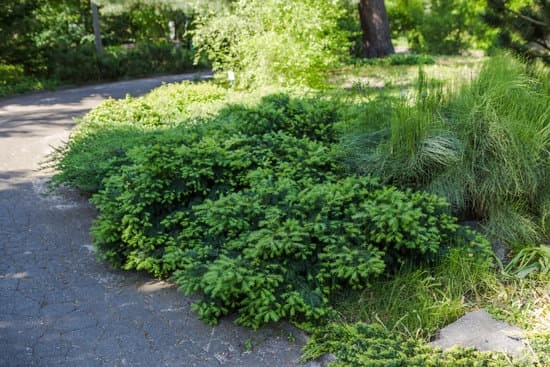
Even though a home in a scenic area includes a guarantee of gorgeous panoramic views of their environment, for their utter chagrin, homeowners immediately realize that working with a sloping backyard can be a harrowing task. On the other hand, the old adage,”More work equals to better results” definitely holds true in the event of landscaping a sloping lawn which presents countless chances for visually pleasing inclusions that could otherwise seem mundane.
When organizing a landscape for a panoramic lawn, it’s quintessential to incorporate this topographical characteristic as a vital factor when choosing each facet of the landscape, in the sort of plants that you would like to utilize to the style of the lawn. Preplanning can help you to handle the cumbersome aspects of landscaping a incline whilst affording amazing results. So, below are some hints about how you can landscape your sloping backyard to make a gorgeous medley of colours and textures.
Grading the terrainBefore you draw up strategies for landscaping your sloping backyard, it’s vital to examine the terrain and also the incline to make certain that your landscape will have the ability to efficaciously handle the downside of gardening on a slope, while making the most of the natural features of the terrain.
A very simple rule principle to understand the way the degree of slope will affect your gardening efforts is the steepness of this incline will be directly proportional to the water you’ll need for your crops. Because steeper slopes often funnel moisture from the crops, forcing the water and soil to flow downhill, it’s essential to find the incline graded. As a matter of fact, many experts suggest that receiving a sloping lawn professionally rated can help you to save a large sum of money on watering the steep terrain at the long run.
Visual investigation: Alternatively, you might also do a visual evaluation of the region. Quantify the harshness of the incline and generate a fast diagram tagging the steepest parts of the lawn; create a notice of the quantity of sun that the various parts of the lawn receive. You might also need to add comments about any drainage problems which could be encountered in certain places.
List the many elements of this landscape: With the structure in hand, you’ll be able position to set the a variety of landscaping components in the drawing like tress, flower beds, fountains, paths, boulders etc.. It’s critical to accurately expect the region which the plants and shrubs will insure at adulthood so the landscape doesn’t appear too crammed.
The steepest sections must have shrubs with profound hitting fibrous roots which will continue into the soil whereas the wider plants which can cover large areas at maturity ought to be implanted in the base of the incline so that they can produce a neat hedge when affording you all of the privacy you have to enjoy your backyard.
Stability and availability: Soil erosion is a massive concern when gardening on a slopenonetheless, based on the steepness of the region, you’ll also have to provide a thought to access requirements like a ladder or alternative forms of support for scaling. The kind of soil and the steepness gradient may also affect the stability of this lawn.
Soil and soil erosion: The way in which the water drains out of a slope will have an effect on the area of soil erosion; for example, if the water runs down directly to the lower floor, there’ll be enormous erosion. Employing non porous substance for landscaping onto a steep terrain may further fortify the soil erosion problem.
Fixing the soil erosion problem: There are several anti fungal steps that may yield remarkable consequences for example:
Terracing
- Laying garden trails Throughout the incline
- Using boulders and logs to Decrease drainage
- Building retaining walls using little stones
- Planting Certain Kinds of bud
- Interlocking walls
Utilizing the ideal kinds of plants can’t just increase the aesthetic appeal of the garden but also help reduce soil erosion. As a matter of fact, mixing several kinds of greenery is the perfect means to decrease the water from draining off too fast. Plants like deep rooted shrubs along with trees such as manzanita and juniper will maintain the soil tight for its shallow rooted perennial shrubs and flowering plants such as clematis and day lilies.
Preparing the floor
Having a listing of crops that you intend to utilize to Decrease soil erosion, You’re all set to prepare the floor for your landscape
The compass points require due diligence: Knowing the way where your lawn faces will prove tremendously helpful when choosing plants for your landscape. Slopes that confront to the west or south have a tendency to drain quicker and might need to be watered over yards facing the north or west. Consequently, if you’re handling a southern or western mountain, select drought resistant shrubs or your own water bills may proceed through the roof.
Earth cover can help: Although for routine locations, bare soil will probably be sufficient to develop a bountiful flowerbed; the narrative will differ with sloping surfaces in which the soil will dry up and deteriorate rapidly due to the slant. Use ground cover crops like Vinca, Sedum and Liriope muscari for the best outcomes.
But, it’s absolutely not a permanent remedy since the soil will drag the dirt off gradually, leaving bald spots on your landscape.
Ornamental grasses: Local, decorative grass varieties with their profound reaching root system which spreads is perfect for controlling erosion. Since grass is reduced upkeep, you won’t need to be concerned about fertilizing the floor. Some attractive decorative grass species include:
Every one these grass varieties flourish when planted on scenic terrain.
Other ground cover crops comprise wintercreeper and periwinkle that also thrive on scenic grounds.
The cosmetic varieties: Plants Which Can Be Utilized in Various Regions of the landscape include:
California Privet: This can be a tall tree which may grow to a height of 10 ft and contains a foliage diameter of nearly 4 ft; the tree develops in part sun and part shade producing cream colored blossoms.
Western Spirea: This is another plant that’s a fantastic option for a sloping lawn; the deciduous tree grows nearly 6 ft tall with a foliage diameter to match. The leaves grow in a riot of colours by rich burgundy to vivid green and every colour in between. However, the plant does require Complete sunlight and thrives in warmer weather
Verbena: With its airy stalks, the tree could be combined with plants which game dense foliage. Its drought tolerant and the purples blossoms can add a bit of colour to a landscape.
Oleander: A popular with homeowners all around, few plants may produce a Mediterranean ambience such as Oleanders in white and pink. The plant could grow tall to nearly 20 feet using a foliage diameter of 12 feet. The blossoms bloom in bunches almost always and can be found in a plethora of colours like yellow, pink, white, red and apricot.
You may also try developing hibiscus and roses onto a patio. Don’t forget to water a incline; a trickle hose will probably be more suitable than overhead sprinklers.
Innovative planting thoughts
Bordered Tiers: Use boulders or landscape wood to produce the overall look of tiers. When utilizing wood, you’ll have to stick the bits together and push a rebar through these to hold the wood in place. Use adhesive to adhere pavers on the wood and also your tiers will be ready. Use plants like day lilies, lavender along with other flowering trees that are perennial. It is possible to use decorative rock or mulch to maintain the moisture inside.
Planted incline: You may also use a combo of flowering shrubs, evergreens and perennial flowers sprinkled all around the lawn.
A flowing deck: You may also build a collection of decks, every falling successively using the incline of the lawn. Try building a set of paths and steps linking the decks. Use flowering shrubs and solar light to make an amazing ambience.
Each basin will function as a distinctive place for particular kinds of plants.
To add the finishing touches to a landscape: Remove the bud and other expansion from the regions designated for the walkway. Use gravel, rock or another kind of hardscape material to cover both the outside and package pea gravel or sand between.
Use massive boulders placed throughout the lawn to make a natural and earthy allure; the big rocks need to be put in the base of the incline from the steep regions for security. After all the stones are put as wanted; bury them fourth of the way to the floor, so you get stability alongside a natural appearance.
Eventually add the finishing touches using a fountain put in a central place, you might also utilize decorative lights or classic wooden seats or wrought iron furniture to finish the landscape.

Welcome to my blog about home and family. This blog is a place where I will share my thoughts, ideas, and experiences related to these important topics. I am a stay-at-home mom with two young children. I hope you enjoy reading it! and may find some helpful tips and ideas that will make your home and family life even better!




